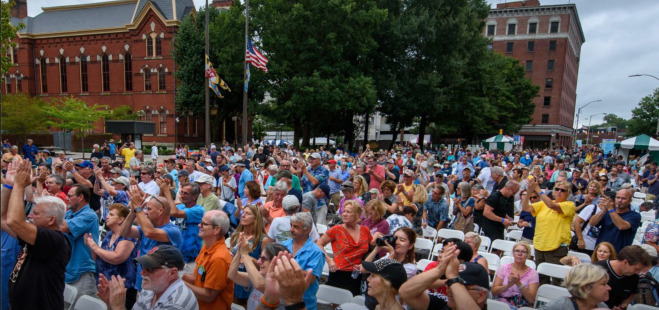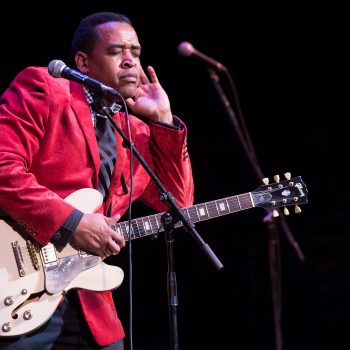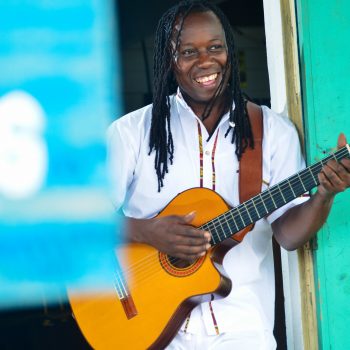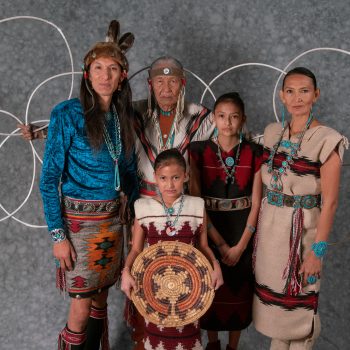If you haven’t tried the Lemon Chess Pie at Ugly Pie on Main Street in Salisbury, Maryland, it’s probably time that you do so. For me, it was a tough decision: the Peanut Butter & Jelly Chess Pie was a serious contender, but the lemon won out. And I happened to miss the Apple Crumb pie because, well, the shop was busy. There were almost 200,000 people visiting Salisbury for the weekend.
Ugly Pie is just next door to The Mad Hatter, a chef-owned restaurant with an adventurous bearing and locally sourced food. Had I known how good the restaurant was going to be, I would have eaten all of my meals there. As schedules allowed, I ate only two: Alice in Toast, an egg cloud (fluffy egg white [a very old food idea enjoying an Instagram comeback] with fresh bacon, avocado and a giant biscuit, and a beef bulgoki preceded by a wonderful, light, fresh crab soup (“most people buy a quart to take home–yesterday, we sold about ten gallons in all”–Chef Dan).
And who better as a dining companion than Mayor Jake Day, the former city council president who is extremely proud of his city’s recent progress. Day points out the old brick building where he started his career as a young architect, then talks about how his dream of rebuilding the old city is is coming true. The rebirth is more than physical. The turning point was Third Fridays, a monthly celebration that brought the community back downtown after a half century of staying away (for a look at the city that used to be, browse these historical photos of Salisbury).
 The success of Third Fridays encouraged the city leaders to pursue a larger dream. They applied to serve as the host city for the National Folk Festival–a three-year commitment with a longer-term contractual responsibility. The National Council for Traditional Arts partners with the host city for three years, and then, the local city must continue a smaller-scale version of the festival for many more years. Last year, it rained, but about 100,000 music and craft fans showed up anyway. This year, the weather was perfect, the music was spectacular, the Salisbury doubled its festival attendance. The joint success was due, in part, to the wonderful vibe, but also to the presentation of one extremely high quality performance followed by another and another and far too many for any reasonable person to absorb in three days. I tried. And I’m writing this article while playing a sampler CD in the background, remembering how much great music I saw on stage, and how much I missed (next year is Salisbury’s third year, so the opportunity window remains open).
The success of Third Fridays encouraged the city leaders to pursue a larger dream. They applied to serve as the host city for the National Folk Festival–a three-year commitment with a longer-term contractual responsibility. The National Council for Traditional Arts partners with the host city for three years, and then, the local city must continue a smaller-scale version of the festival for many more years. Last year, it rained, but about 100,000 music and craft fans showed up anyway. This year, the weather was perfect, the music was spectacular, the Salisbury doubled its festival attendance. The joint success was due, in part, to the wonderful vibe, but also to the presentation of one extremely high quality performance followed by another and another and far too many for any reasonable person to absorb in three days. I tried. And I’m writing this article while playing a sampler CD in the background, remembering how much great music I saw on stage, and how much I missed (next year is Salisbury’s third year, so the opportunity window remains open).
For much of the festival, there were acts on five stages scattered through the (walkable) city center. (And, every time I walked from the Community Stage to the PRMC Stage, I passed the newly-opened ice cream parlor in the renovated old Chesapeake Hotel, and every time, there was a line out the door and beyond).
 We started out with an acoustic band out of Pittsburgh called Tamburaški Sastav Ponoć–five guys carrying on a native Balkan string band tradition with easily accessible music that dates back over 500 years. The instruments look and sound familiar (they resemble guitars, mandolins, etc.), but they’re local to the Balkans: the soprano prim, the alto brać, the ćelo, the bugarija and the berda. The band members learned Balkan music in their communities, and from their parents (for example, Mark, who plays brać, learned from his father, who runs the well-known and well-regarded Duquesne University Tamburitzans music group). It’s the kind of music that sounds just enough like familiar bluegrass and folk to feel comfortable for an audience new to Balkan styles, but the feeling that this music is part of my life runs deep. I suspect many people feel that way.
We started out with an acoustic band out of Pittsburgh called Tamburaški Sastav Ponoć–five guys carrying on a native Balkan string band tradition with easily accessible music that dates back over 500 years. The instruments look and sound familiar (they resemble guitars, mandolins, etc.), but they’re local to the Balkans: the soprano prim, the alto brać, the ćelo, the bugarija and the berda. The band members learned Balkan music in their communities, and from their parents (for example, Mark, who plays brać, learned from his father, who runs the well-known and well-regarded Duquesne University Tamburitzans music group). It’s the kind of music that sounds just enough like familiar bluegrass and folk to feel comfortable for an audience new to Balkan styles, but the feeling that this music is part of my life runs deep. I suspect many people feel that way.
One of the good things about a festival is that performers do their acts more than once. We had hoped to see Sheila Kay Adams tell stories of her Appalachian childhood on Saturday morning, but we managed to see half her act on Sunday instead. She talked about her life as a child being brought up by well-intentioned religious leaders in the community, and explained that their odd combination of accents, mumbling, and dental insufficiencies allowed her to grow up without understanding a single word uttered by any of them.

 The variety of things to do at a folk festival is striking, and provocative. We wandered from Appalachian storytelling to the juke joint electric guitar of Eddie Cotton, Jr., then to the Aurelio, who also plays electric guitar, but in a profoundly different style coming out of Central America. Specifically, Aurelio performs music from the Garifuna culture, found along the coast of Belize, Honduras, Guatemala and Nicaragua. It’s not every day that I’m exposed to this music; the immersive experience of loud guitar, deep kick drum, and a rocking rhythm took me to a place I’ve never been before. A different sort of transcendency shook me out of Sunday morning sleepiness (after a long Saturday night) as Cora Harvey Armstrong belted gospel favorites (she took requests from a very knowledgable audience) with backup from family members in her small band.
The variety of things to do at a folk festival is striking, and provocative. We wandered from Appalachian storytelling to the juke joint electric guitar of Eddie Cotton, Jr., then to the Aurelio, who also plays electric guitar, but in a profoundly different style coming out of Central America. Specifically, Aurelio performs music from the Garifuna culture, found along the coast of Belize, Honduras, Guatemala and Nicaragua. It’s not every day that I’m exposed to this music; the immersive experience of loud guitar, deep kick drum, and a rocking rhythm took me to a place I’ve never been before. A different sort of transcendency shook me out of Sunday morning sleepiness (after a long Saturday night) as Cora Harvey Armstrong belted gospel favorites (she took requests from a very knowledgable audience) with backup from family members in her small band.
Family plays an important role in traditional music. It’s not unusual to find siblings performing together, sometimes as part of a multigenerational act.
 We missed them onstage, but we spent an hour chatting with the Jones Benally Family Dancers, a Native American group. They call themselves Dine’–others call them Navajo (a useful comparison: people in Germany call themselves Deutsche, but others call them German). The dad–Berta Benally–has been dancing onstage for three-quarters of a century. He doesn’t know how old he is, but family members guess his age at about 90 years, give or take. He still does an amazing hoop dance, and other dances that he learned from his grandfather. His story, which I only began to learn, weaves through the history of “not being kidnapped to attend an Indian school” because his parents hid him away, joining Buffalo Bill’s Wild West and traveling to almost every country in the world as a dancer and performer and stage craft expert, and later performing as John Wayne’s stunt double in Hollywood. These days, Berta performs with his son and daughter (who have their own rock band that incorporates Dine’ traditions), and his granddaughters (who really wanted to go back to the hotel room to change out of their stage clothes so they could do their homework).
We missed them onstage, but we spent an hour chatting with the Jones Benally Family Dancers, a Native American group. They call themselves Dine’–others call them Navajo (a useful comparison: people in Germany call themselves Deutsche, but others call them German). The dad–Berta Benally–has been dancing onstage for three-quarters of a century. He doesn’t know how old he is, but family members guess his age at about 90 years, give or take. He still does an amazing hoop dance, and other dances that he learned from his grandfather. His story, which I only began to learn, weaves through the history of “not being kidnapped to attend an Indian school” because his parents hid him away, joining Buffalo Bill’s Wild West and traveling to almost every country in the world as a dancer and performer and stage craft expert, and later performing as John Wayne’s stunt double in Hollywood. These days, Berta performs with his son and daughter (who have their own rock band that incorporates Dine’ traditions), and his granddaughters (who really wanted to go back to the hotel room to change out of their stage clothes so they could do their homework).
Ostensibly, the National Folk Festival is about musical performance (and craft, as below). That’s one way to look at what happened in Salisbury last weekend. There’s more to it, which is why the National Council for Traditional Arts does the work it does. Berta Benally, Aurelio Martinez, Theodore “Lòlò” Beauburn, Jr. (who dances and sings as the lead of a Haitian band, Boukman Eksperyans), Cora Harvey Armstrong out of Richmond, Virginia, Eddie Cotton, Jr. from Clinton, Mississippi, Rahim AlHaj (the Iraqi oud player from Albuquerque who I missed this time around)–they define the United States and its culture. They remind the crowd that not one of us–nearly all of the people who currently live in the United States–come from any one place. We come from so many places, it’s nearly impossible for any of us to make any meaningful list of our various family tributaries.
The exception might be the Benally family, but here, too, there’s an enormous global influence. The U.S. is a nation of rich contradictions–the Buffalo Bill Wild West shows became a place where Native American cultures were collected and celebrated, but these shows became far more popular in Europe than in the U.S. And of everyone who appeared at this particular festival, Berta Benally is probably the only one whose resume includes not only performances for the Queen of England, but also throughout South America, Europe, Asia. He’s certainly the only one who helped to open Honolulu’s first shopping mall, and performed regularly at the Rose Bowl Parade. Welcome to the United States of America, not quite his native land.
And then, there’s the crafts. This was a big music weekend, so I found myself attracted to Pete Ross. His display–there were more than a dozen interesting craft displays–focused on the making of the gourd banjo. The writer/historian Krisina Gaddy (K.R. Gaddy) joined us for a deep dive into the several strands of banjo history, including answers to my questions about origin in Africa, new information (for me) about the Dutch and Surinam, and serious questions about the sanitized history of the banjo making its way along White paths from England to Appalachia. I was sufficiently taken with the history lesson to visit her website, and to listen for an hour to a podcast that included performance and historical storytelling.
I suspect this is the point of the festival. I go, I eat, I listen to music, I come home feeling as though I might have learned something, and then, I spend time learning even more by visiting websites and listening to music. All because I decided to spend a weekend in a place I’d never been, Salisbury, Maryland. I shall return (next year!).
(Photos courtesy of the artists)